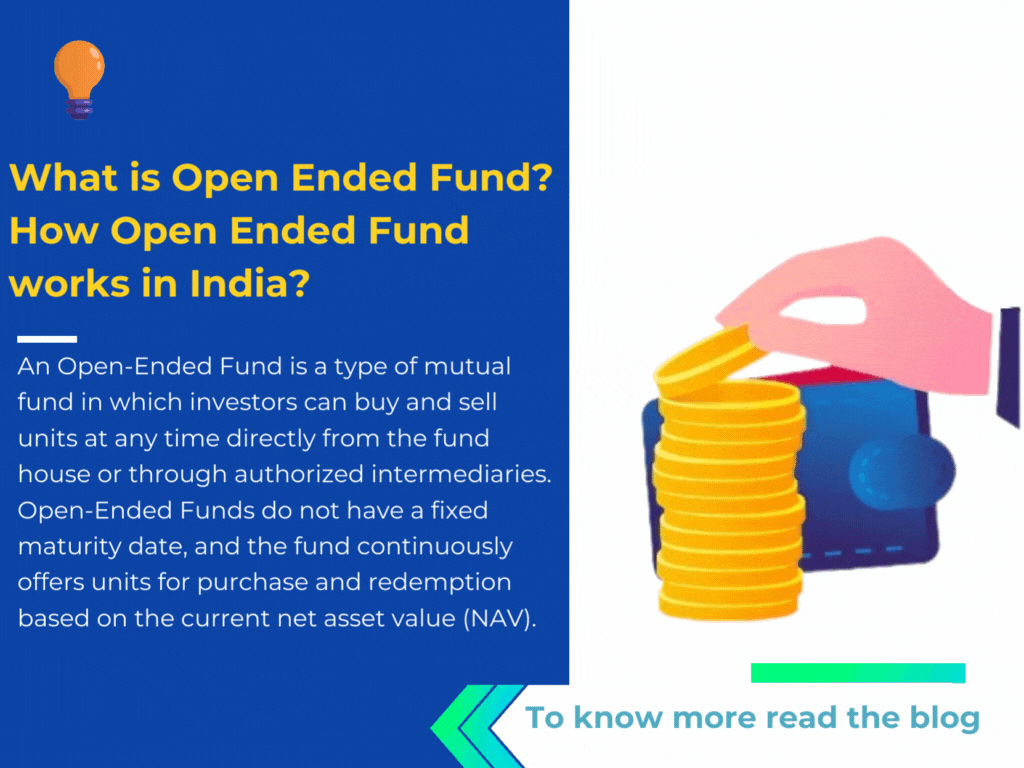What is Open Ended Fund? How Open Ended Fund works in India?
An Open-Ended Fund is a type of mutual fund in which investors can buy and sell units at any time directly from the fund house or through authorized intermediaries. Open-Ended Funds do not have a fixed maturity date, and the fund continuously offers units for purchase and redemption based on the current net asset value (NAV).
Here's how an Open-Ended Fund works in India:
Fund Creation: The fund house creates the Open-Ended Fund by issuing units to investors during the initial offering period. The fund collects money from investors and pools it together to invest in a diversified portfolio of securities based on the fund's investment objective.
Continuous Buying and Selling: After the initial offering period, investors can buy or sell units of the Open-Ended Fund at any time directly from the fund house or through authorized intermediaries, such as distributors or online platforms. The units are bought or sold at the prevailing NAV, which is calculated daily.
Net Asset Value (NAV): The NAV of an Open-Ended Fund is calculated by dividing the total value of the fund's assets by the number of units outstanding. The NAV is typically published at the end of each business day and reflects the current value of the fund's portfolio.
Subscription and Redemption: Investors can subscribe to an Open-Ended Fund by purchasing units directly from the fund house or intermediaries. Similarly, they can redeem their units by selling them back to the fund house or intermediaries. The redemption proceeds are based on the current NAV of the fund.
Portfolio Management: The fund manager of the Open-Ended Fund actively manages the fund's portfolio based on the investment objective and strategy outlined in the fund's prospectus. The manager makes investment decisions, buys and sells securities, and ensures the portfolio remains in line with the fund's investment mandate.
Expenses and Fees: Open-Ended Funds charge fees and expenses to cover management fees, administrative costs, and other operational expenses. These fees are deducted from the fund's assets, reducing the overall returns for investors.
Open-Ended Funds in India offer investors flexibility in terms of entry and exit. Investors can enter or exit the fund at any time, subject to any applicable exit loads or fees specified by the fund. They provide an avenue for long-term investment, as well as short-term liquidity needs.
Before investing in an Open-Ended Fund in India, investors should carefully review the fund's prospectus, which provides details about the investment objective, strategy, fees, expenses, and risks associated with the fund. It's advisable to consider factors such as the fund's performance track record, the reputation of the fund house, and the suitability of the fund's investment objective to individual investment goals.


